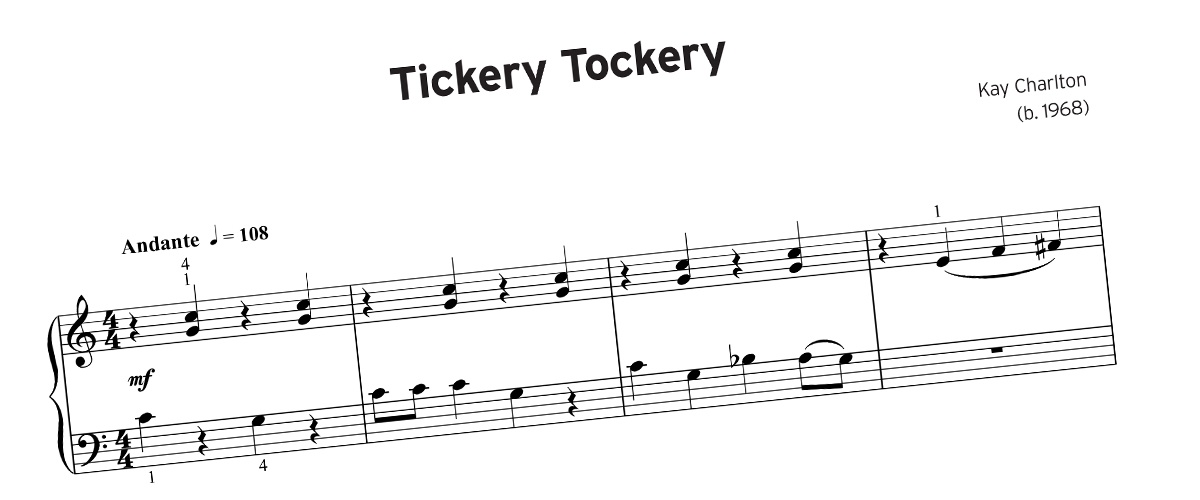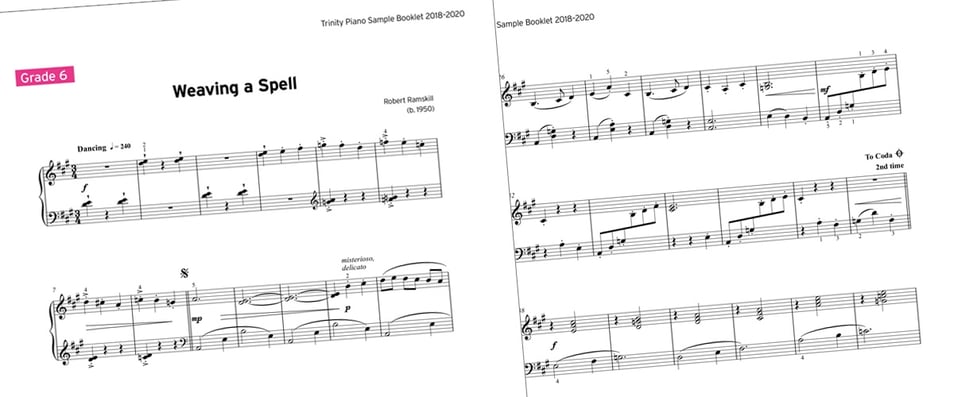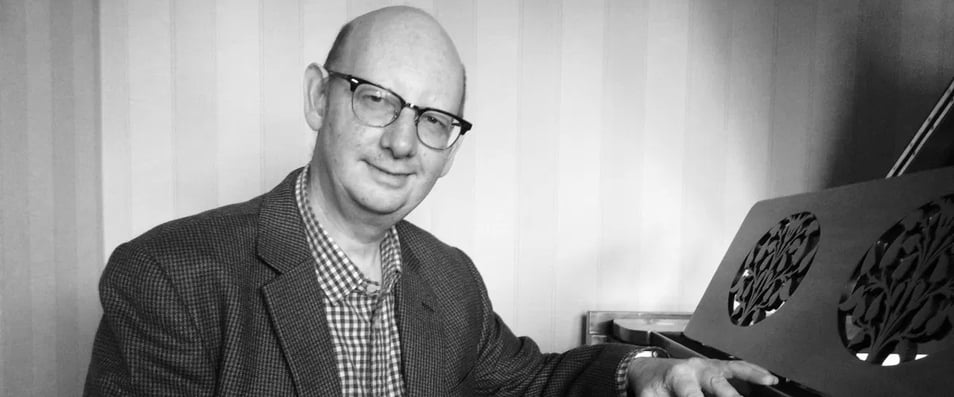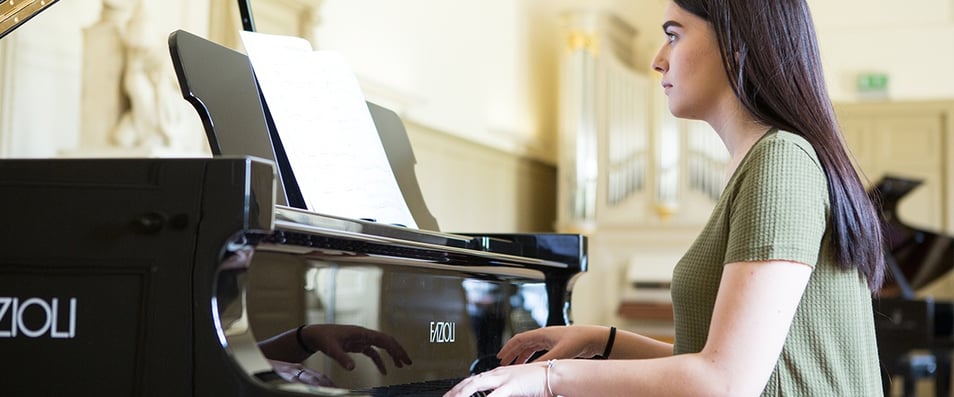Meet the composer: Kay Charlton

The repertoire of our Piano 2018-2020 syllabus includes specially commissioned pieces by contemporary composers. Here we meet one of those composers, Kay Charlton, to hear a bit more about her career, and about the two pieces she composed for the new syllabus.
 What’s your musical background?
What’s your musical background?
I started playing the trumpet when I was at school then had piano lessons, and took a music degree at the University of East Anglia, UK. I’ve just completed the ‘Teaching Musician’ MA at Trinity Laban – I don’t think I’ll ever stop learning!
What made you get into composing?
I’ve always written music – usually for bands I’ve played in. My first piece for Trinity’s Piano 2015-2017 syllabus, Easy Living (2015), was selected as part of an open call for compositions that I spotted in Music Teacher magazine. I was delighted to be asked to submit more pieces for the 2018-2020 syllabus.
What do you enjoy most about composing?
It’s a delight to hear my pieces being performed; I understand from Trinity that my piano music has been played for exams around the world – from India to America to Australia – which is a wonderful feeling!
Which composers have been an inspiration to you?
I’ve been influenced by a wide range of music – jazz, classical, and music from around the world. I love the rhythms and melodies of Indian music and the harmonies of the great jazz trumpeter Kenny Wheeler. My playing and teaching both feed into my composing. Recently I wrote music to accompany part of a black and white movie made in India in 1948. Sword Fight was written for Bollywood Brass Band’s ‘Carnatic Connection’ CD with South violinist Jyotsna Srikanth, and accompanies the finale of the movie Chandralekha (1948).
(Sword Fight starts at 3:38 mins).
Composing a new piece
Where do you look for inspiration?
I think very hard about who or what the music is intended for, then start by getting some melodies running through my head. I’ve composed lots of music for beginners – I like creating catchy tunes that are approachable but with some challenge in there too, sometimes reflecting my travels with Bollywood Brass Band, e.g Eastern Promise or Play that Bhangra Beat from ‘Are You Ready?’, a collection of easy tunes/backing tracks for whole-class trumpet teaching (Warwick Music).
What techniques do you use?
Once I have an idea I sit down to arrange it using the Sibelius notation software, then I play it to make sure it really works for the instrument.
Are there any specific techniques you use when composing for piano?
Piano isn’t my first instrument, so I have to make sure it works under the fingers!
What advice would you give to someone hoping to start composing?
There are lots of starting points for composition – word rhythms perhaps, or a scale or chord progression. I tend to start with a melody and then think along the lines of question and answer phrases.
What do you like about Trinity’s syllabuses?
I like Trinity’s improvisation options and the stylistic range of pieces on the syllabuses. I’ve written some Bhangra style pieces for Trinity’s Music Tracks Trumpet series at Initial, which are inspired by my playing with Bollywood Brass Band.
Exploring a piece: Tickery Tockery, Initial
Can you tell us a bit about this piece?
Tickery Tockery has the clear image of a ticking clock to help keep the tempo steady – just like clockwork. I created variety by swapping the melody between the left and right hands, and the chords in bars 8 and 16 are like the chiming bell of the clock. The structure for this piece is a simple A A B A – the ‘tick, tock, tickery tock’ tune is in the left hand first; it is then repeated in the right hand with a different ending. The B section is a contrasting melody with a crescendo from piano to forte, then the first tune returns with a chime to finish the piece.
What inspired the piece?
I like to create an image with the title of my pieces and wanted something that might appeal to young learners.
What do you hope that pianists will get out of playing the piece?
A good sense of pulse, and independent playing in the right and left hands.
Get this piece for free in our Piano Sample Booklet
Exploring a piece: Walking (and Talking), Grade 1
Can you tell us about this piece?
Walking (and Talking) has a jazzy feel, although the quavers are not swung. It is a light-hearted tune and should be played with a bit of a swagger as though walking and talking at the same time. The quieter phrases in bars 8 and 16 are like whispering a secret to a friend!
What’s the main piece of advice you’d give to someone performing your pieces?
Enjoy exploring them – use the title as inspiration for the playing style of the piece.
Kay took a music degree at the University of East Anglia, Norwich, and since then has played trumpet with various groups, mainly the Bollywood Brass Band for who she is arranger and Projects Manager, leading on their education programme. She has worked in education for over twenty years – as a peripatetic and whole class instrumental teacher and as a curriculum teacher, workshop leader and composer. She recently completed an MA on the ‘Teaching Musician’ course at Trinity Laban Conservatoire of Music and Dance.




